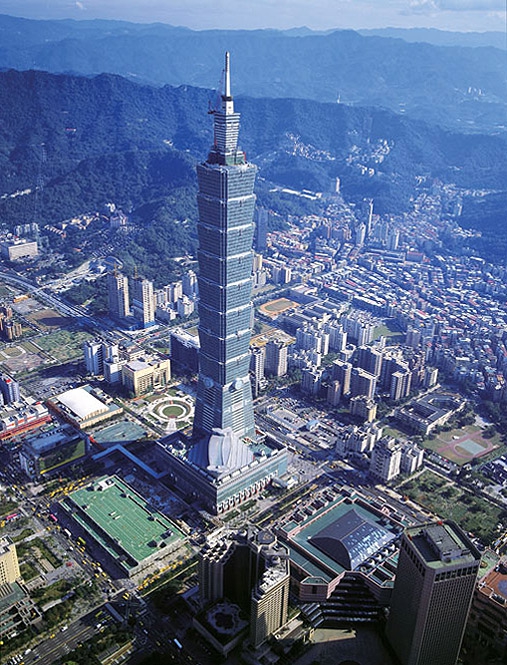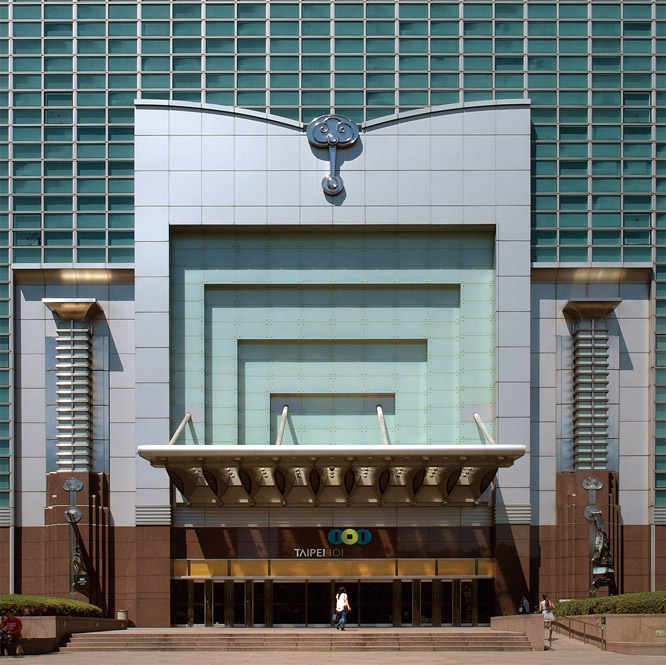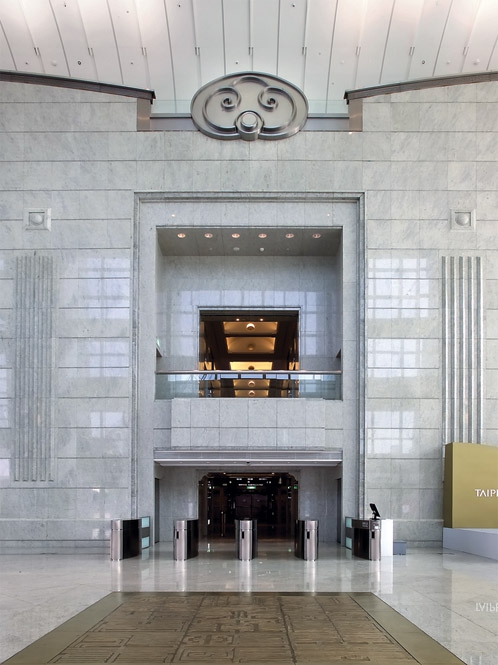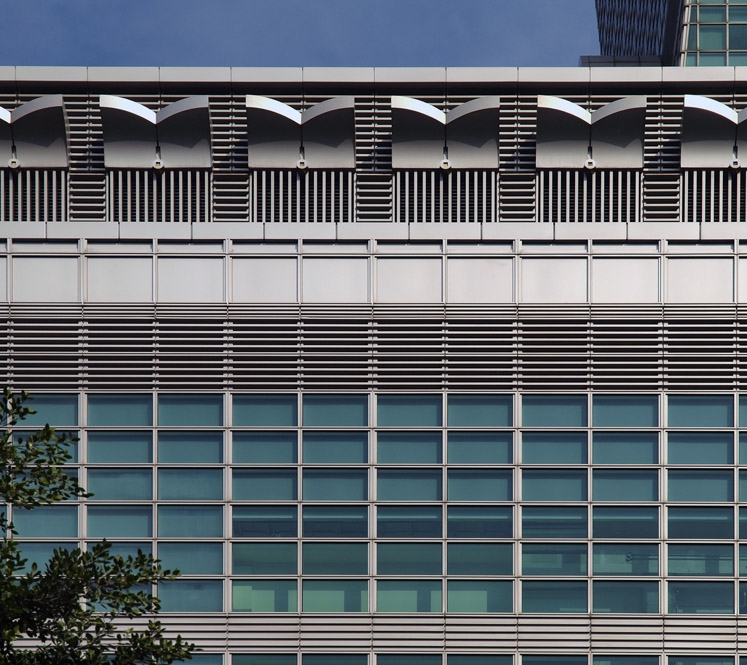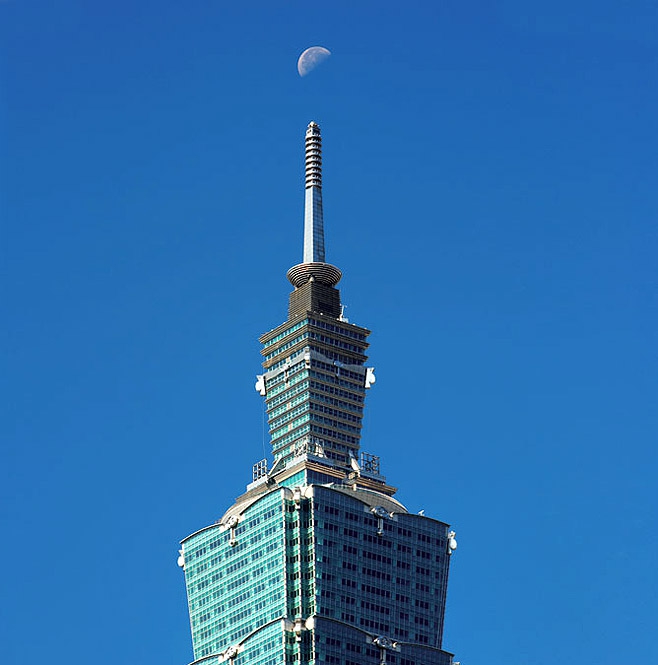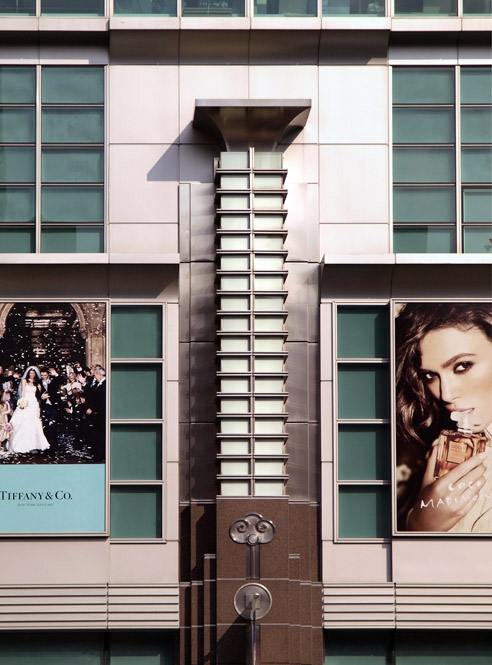Taipei Financial Center (Taipei 101)
Completion
Location
Taipei, Taiwan
Site Area
30,277 m²
Total Floor Area
374,336 m²
Stories
B5 - 101F
Heigh
508 m
Category
Iconic Projects, Mixed-Use, Office
Client
TAIPEI Financial Center Corporation
Awards
- Grand Award, 2004 Popular Science’s “Best of What’s New” Award, Engineering Category
- Gold Award, 2004 Emporis Skyscraper Award
- Special Award, The 5th Far Eastern Architecture Award
- 2006 Taiwan Architecture Award
- 2016 CTBUH 2016 Tall Building Performance Award
THE EARTH AND SKY
A distant view can be gained if one climbs high. The form of a traditional Chinese peak helps the view from indoors. With eight floors as a peak and structural entity, Taipei 101 marches upward by stacking peak on peak. It is similar to the form of the bamboo joint expressing upward progress and prosperous business. Furthermore, the Oriental expression of height and width is achieved with the extension of stacking units and not like in the West, which expands a mass or form. For example, the Chinese pagoda is developed vertically step by step while the lateral development of the Peking National Palace is created by its progressive courtyard layout. The application of symbols and totems in China intends to convey the message of fulfillment. Therefore, the talisman symbol and dragon/phoenix motifs are employed at appropriate places on the building. For example, the commercial complex’s roof is in the form of a Phoenix’s tail, symbolizing good fortune and luck. Furthermore, at the sharp angles on the building that generate unfavorable geomancy, auspicious dragons are place to dissipate the evil energy. At the 24th and 27th floors, the symbol of the round heavens embracing the square earth is utilized as a structural tenon. It represents the universal rotation “round sky as the entity and square earth in practice,” through the Chinese traditional wood structure construction with tenon and mortise, and locks the upper eight peaks into the lower three peaks and demonstrates the stability of the building. These are all practical applications of messages and convey the intent of ultimate fulfillment. We live within the hieroglyphics passed down through several thousands of years and these are deeply embedded in our culture. The need for image and expression is just as natural as breathing. Architectural activities and real interaction with images exist everywhere, and serve as the best indication of the need for ultimate fulfillment in Oneness theory.
COMMENTS ON THE FORM AND
LANGUAGE OF TAIPEI 101
Oneness Theory
Chinese culture attributes its origin to Taoism. Taoism considers all things as an integral entity.Mutually interactive and closely related, with interchanging circulation at all times.
The relationship of considering all things in the universe as an integral entity is referred to as the Oneness Theory.
A Building is a Message
All things are mutually interactive. They all generate their own messages and such message-like media can be mutually sensed. A message is the medium of interaction.
The messages a building space and its body generates are the most important media in our life.Therefore, a building is both the message and the medium.
Fulfillment of the Origin
Chinese culture attributes its origin to Taoism. Taoism considers fulfillment as its ultimate end. Therefore, both individuals and groups have continuously pursued fulfillment in their life journey.
The Buddha needs a golden body to manifest ultimate fulfillment. All things seek fulfillment as their ultimate goal.
A distant view can be gained if one climbs high. The form of a traditional Chinese peak helps the view from indoors. With eight floors as a peak and structural entity, Taipei 101 marches upward by stacking peak on peak. It is similar to the form of the bamboo joint expressing upward progress and prosperous business. Furthermore, the Oriental expression of height and width is achieved with the extension of stacking units and not like in the West, which expands a mass or form. For example, the Chinese pagoda is developed vertically step by step while the lateral development of the Peking National Palace is created by its progressive courtyard layout. The application of symbols and totems in China intends to convey the message of fulfillment. Therefore, the talisman symbol and dragon/phoenix motifs are employed at appropriate places on the building. For example, the commercial complex’s roof is in the form of a Phoenix’s tail, symbolizing good fortune and luck. Furthermore, at the sharp angles on the building that generate unfavorable geomancy, auspicious dragons are place to dissipate the evil energy. At the 24th and 27th floors, the symbol of the round heavens embracing the square earth is utilized as a structural tenon. It represents the universal rotation “round sky as the entity and square earth in practice,” through the Chinese traditional wood structure construction with tenon and mortise, and locks the upper eight peaks into the lower three peaks and demonstrates the stability of the building. These are all practical applications of messages and convey the intent of ultimate fulfillment. We live within the hieroglyphics passed down through several thousands of years and these are deeply embedded in our culture. The need for image and expression is just as natural as breathing. Architectural activities and real interaction with images exist everywhere, and serve as the best indication of the need for ultimate fulfillment in Oneness theory.
COMMENTS ON THE FORM AND
LANGUAGE OF TAIPEI 101
Oneness Theory
Chinese culture attributes its origin to Taoism. Taoism considers all things as an integral entity.Mutually interactive and closely related, with interchanging circulation at all times.
The relationship of considering all things in the universe as an integral entity is referred to as the Oneness Theory.
A Building is a Message
All things are mutually interactive. They all generate their own messages and such message-like media can be mutually sensed. A message is the medium of interaction.
The messages a building space and its body generates are the most important media in our life.Therefore, a building is both the message and the medium.
Fulfillment of the Origin
Chinese culture attributes its origin to Taoism. Taoism considers fulfillment as its ultimate end. Therefore, both individuals and groups have continuously pursued fulfillment in their life journey.
The Buddha needs a golden body to manifest ultimate fulfillment. All things seek fulfillment as their ultimate goal.

